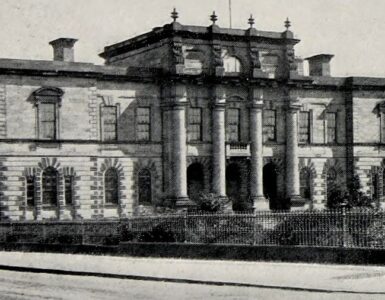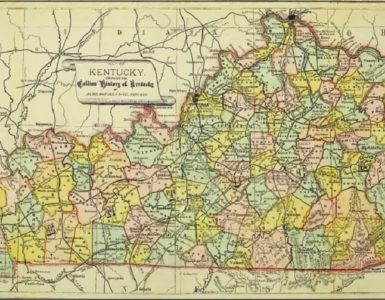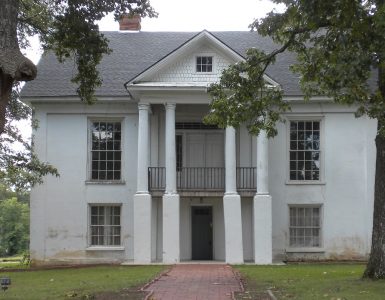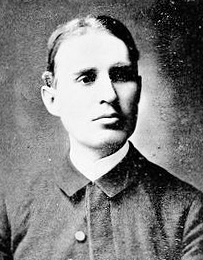 James Isaac was born September 25, 1862 in Arcadia, Tennessee to Charles Robertson and Margaret (Newland) Vance. Charles and Margaret were married in the fall of 1860 by Rev. Daniel Rogan of Kingsport. Soon after birth his father was called away to serve in the Confederate military leaving James and his mother to live with family in Arcadia. After the war, James’s father ruled in the local Presbyterian Church as an elder, was selected a commissioner to the Presbyterian Church in the United States (PCUS) General Assembly, and was for over twenty years President of the Board of Trustees for King College. While growing up he developed interest in becoming a lawyer as he observed his father practicing law. However, his mother had home schooled James and provided much of his religious instruction. She encouraged him to become a minister and that was the direction his studies would take.
James Isaac was born September 25, 1862 in Arcadia, Tennessee to Charles Robertson and Margaret (Newland) Vance. Charles and Margaret were married in the fall of 1860 by Rev. Daniel Rogan of Kingsport. Soon after birth his father was called away to serve in the Confederate military leaving James and his mother to live with family in Arcadia. After the war, James’s father ruled in the local Presbyterian Church as an elder, was selected a commissioner to the Presbyterian Church in the United States (PCUS) General Assembly, and was for over twenty years President of the Board of Trustees for King College. While growing up he developed interest in becoming a lawyer as he observed his father practicing law. However, his mother had home schooled James and provided much of his religious instruction. She encouraged him to become a minister and that was the direction his studies would take.
He prepared for the ministry first at King College earning both the Bachelor and Master of Arts, then he went to Union Seminary in Virginia completing the divinity program in 1886. During his studies he was licensed by Holston Presbytery, 1884, so he could test his gifts and be ready for ministry. He was ordained and installed in the Presbyterian Church in Wytheville, Virginia and served until 1887. After four years in the Second Presbyterian Church in Alexandria, and then three or so more in First Presbyterian Church, Norfolk, he accepted a call in 1894 to the church that would receive most of his remaining pastoral service.
At the time of his move to Nashville, James Vance did not know that he would have something in common with President Grover Cleveland. Cleveland would serve his second term in office non-consecutively because Benjamin Harrison defeated him when he ran for a second term in 1888. At the time of Vance’s installation in First Church in 1895, the communicate membership numbered over a thousand according to the annual statistics reported to the PCUS General Assembly, which made it the largest church in the denomination. Other large churches such as Central in Atlanta had 812 members; B. M. Palmer’s congregation in New Orleans included over 650 communicates; and the Woodland Street Church in Nashville had a flock of 425 over seen by R. C. Reed. However, despite his effective ministry and an appreciative congregation in Nashville, at the turn of the century Vance left Tennessee for the North Church of the Reformed Church in America in Newark, New Jersey. After a decade of ministry, Dr. Vance returned to Nashville in 1910 for his second call continuing until his retirement in 1936. In 1914, he enjoyed the privilege of celebrating the congregation’s centennial by delivering a discourse titled, “A Century Old Church,” using for his text Joshua 14:11. After fifty years of ministry to local congregations, denominationally, interdenominationally, and ecumenically, James Isaac Vance died November 24, 1939.
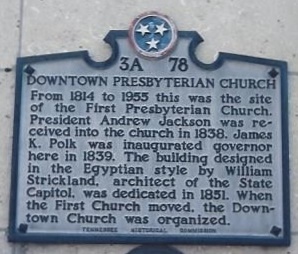 During his first pastorate in Virginia, he married Mamie Stiles Currell of York, South Carolina, December 22, 1886. They had six children. The boys were William Currell, James Isaac, Jr., and Charles Robertson; the girls included Agnes Wilkie, Ruth Armstrong, and Margaret. He was honored by King College first with the Doctor of Divinity, and then later his alma mater gave him the LLD. Hampden-Sydney College gave him another DD, and Austin College graced him with a second LLD. He was the moderator of the PCUS General Assembly in 1918.
During his first pastorate in Virginia, he married Mamie Stiles Currell of York, South Carolina, December 22, 1886. They had six children. The boys were William Currell, James Isaac, Jr., and Charles Robertson; the girls included Agnes Wilkie, Ruth Armstrong, and Margaret. He was honored by King College first with the Doctor of Divinity, and then later his alma mater gave him the LLD. Hampden-Sydney College gave him another DD, and Austin College graced him with a second LLD. He was the moderator of the PCUS General Assembly in 1918.
Dr. Vance published a considerable amount of material including several popular Christian-living books, articles, lectures, and sermons during his fifty years of ministry. He was quite an accomplished author and commonly read by many church members. His writings came forth first in the book, The Young Man Foursquare: In Business, Society, Politics, and Religion, 1894, which was followed by Church Portals, 1895, The College of Apostles; A Study of the Twelve, 1896, Rise of a Soul, 1897, Royal Manhood, 1899, Simplicity in Life, 1903, A Young Man’s Make-Up, 1904, The Eternal in Man, 1907, Tendency: The Effect of Trend and Drift in the Development of Life, 1910, Life’s Terminals, 1917, The Life of Service: Some Christian Doctrines from Paul’s Experience in the Epistle to the Romans, 1918, In the Breaking of Bread: A Volume of Communion Addresses, 1922, Being a Preacher: A Study of the Claims of the Christian Ministry, 1923, God’s Open: Sermons That Take Us Out of Doors, 1924, Forbid Him Not: Messages for our Day and Time, 1925, Love Trails of the Long Ago, 1927, This Dreamer: Addresses on Achieving Faith, 1929, The Field is the World, 1930, Sermons in Argot, 1931, Worship God!, 1932, Let Not Your Heart be Troubled: Communion Addresses, 1934, and Thus Pray Ye, 1935. Some of his individually published sermons include–Predestination, 1898, Christian Fundamentals, 1924, and Fundamentalism, Liberalism, Tolerance, [1923]. Due to the popularity of his written works and his skill as a speaker, Dr. Vance was sought not only as a guest speaker, but also by colleges to serve as their presidents, and other churches hoping to encourage him into their pulpits.
Barry Waugh
The header image shows the wharves in Norfolk, Virginia. For a comprehensive history of the Nashville church, see Damaris Witherspoon Steele, First Church: A History of Nashville’s First Presbyterian Church, in three volumes, 2004. The history of Vance’s ministry crosses from vol. 1 into vol. 2. It should be noted that the property used as First Church at the time of Vance’s two calls is currently named Downtown Presbyterian Church (PCUSA). Also with respect to the history of First Church see, The First Presbyterian Church, Nashville, Tennessee: The Addresses Delivered in Connection with the Observance of the One Hundredth Anniversary, November 8-15, 1914, published the following year. With respect to the size of First Church, Nashville, even though the membership was over a thousand in 1895, when the vote was taken for Vance’s call only 240 votes total were tallied (Steele, 1:201). Biographical sources from Internet Archive include Zella Armstrong, Notable Southern Families, Vol. 2, 1922; Confederate Veteran, Feb. 1912; Will T. Hale, A History of Tennessee and Tennesseans, vol. 5; and the usual standard Presbyterian historical reference works. The photographs of First Church, Nashville, currently Downtown Presbyterian Church, and the picture of the Tennessee State Historical Marker were taken by the author.



